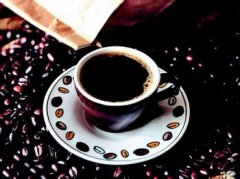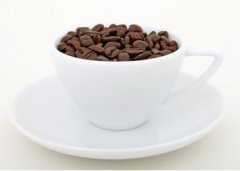Coffee Culture in Vienna Coffee Culture History

Coffee is something Viennese people are proud of. Viennese even compared it with music and waltz, called "Vienna Three Treasures", which shows the love between Viennese and coffee. Some people say that Vienna is "five steps and one coffee". This may be a poet's exaggeration, but Vienna has a large number of cafes. From coffee booths on street corners for people to stand and drink, coffee shops near universities where students gather, to rich and luxurious cafes near theaters and imperial cities, there are at least dozens of cafes, some of which open at 6:30 a.m. and close at 2 a.m. Therefore, it is not an exaggeration to say that the air of "Music Capital" is not only flowing with the rhythm of music, but also filled with the fragrance of coffee.
Coffee drinking has become a part of life in Vienna, and for the price of a cup of coffee one can meet friends in a cafe, play chess, read books, write books, read newspapers (usually newspapers from many countries), or watch TV in an obscure corner in a laid-back atmosphere. Some coffee shops have their own clientele: painters, writers, or politicians; most coffee shops have a diverse clientele. Vienna's most famous café is the Central Cafe, located in the city centre. Before World War I, it was a gathering place for famous poets, playwrights, artists, musicians and diplomats. Some people say that it is the cradle of many Austrian poems, plays and novels, which may be exaggerated, but Mozart, Beethoven, Schubert, Strauss and his son, the "Waltz Dynasty", are all frequent visitors here.
Today, the Central Cafe is thriving, but no matter how crowded it is, guests can stay as long as they want, a century-old tradition of Viennese cafes. There are also many high-profile cafes in Vienna, which are always closely related to some famous people in the past or present. Viennese like to tell visitors which cafés artists and writers meet frequently and which cafés politicians meet journalists. Viennese coffee comes in many varieties, from black coffee to coffee with milk in various colors, each with its own characteristics, suitable for different tastes, and each with its own name. So, walking into a Viennese cafe and simply asking for a cup of coffee can overwhelm the waiter, because there are at least 40 varieties of coffee. If you don't know much about coffee and want to experience the unique atmosphere of a Viennese cafe, order the "Melange" we mentioned earlier. This espresso is completely Viennese and has a long aftertaste. Whichever coffee you order, you get a glass of water at the same time, for no reason other than that the water in Vienna is particularly cool and delicious. But if the waiter brings the guest a second glass of water, it means "you've been here too long."
Viennese have a sweet tooth, and they often like to order a cup of coffee with a nice dessert. Vienna has a lot of desserts, but for coffee people like the Gugelhupf, a hollow omelet typical of Vienna. The availability of newspapers, pictorials and magazines for readers to read is a cultural feature of Vienna cafes, which also has historical roots. It is said that before coffee was widely accepted, many cafes in Vienna had to offer free newspapers to attract customers, because newspapers were expensive at that time, and a newspaper cost twice as much as a cup of coffee. Of course, this entertaining role of the newspaper no longer exists today, but it has survived and constitutes the cultural taste of the Viennese café.
Important Notice :
前街咖啡 FrontStreet Coffee has moved to new addredd:
FrontStreet Coffee Address: 315,Donghua East Road,GuangZhou
Tel:020 38364473
- Prev

American and Canadian scholars have found that drinking coffee can help prevent gout
A new large-scale study by researchers in the United States and Canada has found that drinking coffee can help reduce the level of uric acid in the body's blood and prevent gout. Elevated levels of uric acid in the blood are a harbinger of gout. Gout, a disease characterized by joint pain and inflammation, is most common in adult men. University of British Columbia in Canada, Harvard University in the United States
- Next

World Coffee Brand Ranking Coffee Basics
Nescafe: coffee with a long history, founded in 1867. The Bird's Nest logo was designed in the late 19th century to pray for a reduction in infant mortality worldwide. UCC: Founded in Japan in 1933, UCC is Japan's most successful brand in the world and a guarantee of quality. Royal Copenhagen: Royal Copenhagen has always had high quality reviews.
Related
- Beginners will see the "Coffee pull flower" guide!
- What is the difference between ice blog purified milk and ordinary milk coffee?
- Why is the Philippines the largest producer of crops in Liberia?
- For coffee extraction, should the fine powder be retained?
- How does extracted espresso fill pressed powder? How much strength does it take to press the powder?
- How to make jasmine cold extract coffee? Is the jasmine + latte good?
- Will this little toy really make the coffee taste better? How does Lily Drip affect coffee extraction?
- Will the action of slapping the filter cup also affect coffee extraction?
- What's the difference between powder-to-water ratio and powder-to-liquid ratio?
- What is the Ethiopian local species? What does it have to do with Heirloom native species?

